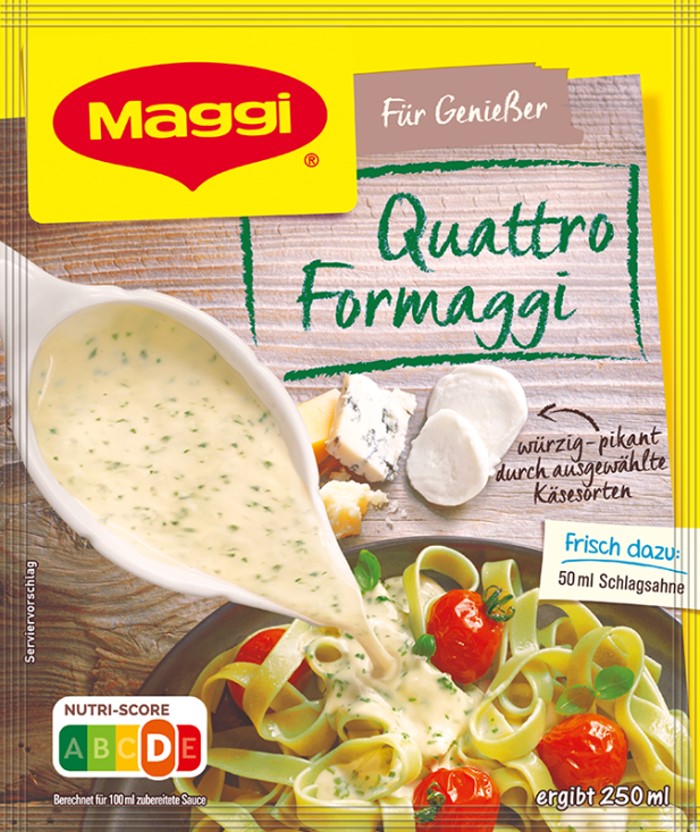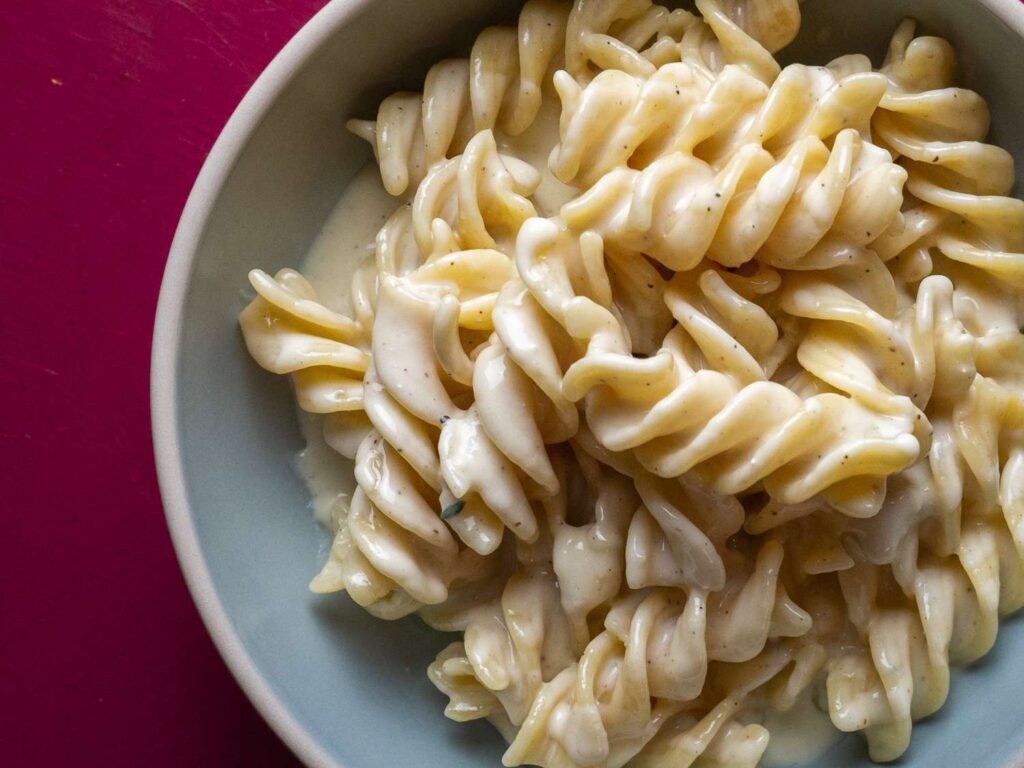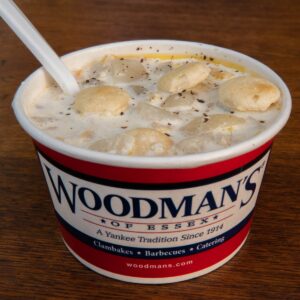Who doesn’t love a rich, creamy sauce to elevate a meal? Formaggi Sauce is a delightful blend of cheeses, offering a unique, savory taste.
This sauce can transform even the simplest dishes into gourmet experiences. Formaggi Sauce is more than just a cheese sauce. It’s a culinary marvel that combines various cheeses to create a deliciously creamy and flavorful addition to your meals. Whether you pour it over pasta, drizzle it on vegetables, or use it as a dip, Formaggi Sauce adds a rich, cheesy goodness to every bite.
This versatile sauce is perfect for family dinners, parties, and even quick weeknight meals. Let’s explore the magic of Formaggi Sauce and how it can bring a touch of gourmet to your everyday dishes.
Introduction To Formaggi Sauce
Formaggi Sauce is a delightful cheese sauce that enhances any dish. This creamy, rich sauce is perfect for pasta, vegetables, and meats. Dive into the world of Formaggi Sauce and discover its unique qualities.
A Brief History
Formaggi Sauce has its roots in Italian cuisine. Italians have always loved cheese. They created Formaggi Sauce to combine their favorite cheeses into one dish. This sauce quickly became popular across Italy. Today, it is enjoyed worldwide.
What Makes It Unique
Formaggi Sauce stands out because of its blend of cheeses. It usually includes Parmesan, Mozzarella, and Gorgonzola. Each cheese adds its own flavor and texture. This creates a complex and delicious sauce.
The sauce is also versatile. It can be used in many dishes. For example:
- Pasta dishes
- Vegetable casseroles
- Grilled meats
Another unique feature is its creamy texture. This comes from the use of cream or milk. The result is a smooth and rich sauce that coats food beautifully.
Here is a simple table to summarize the key points:
| Feature | Description |
|---|---|
| Cheese Blend | Includes Parmesan, Mozzarella, and Gorgonzola |
| Versatility | Used in pasta, vegetables, and meats |
| Creamy Texture | Made with cream or milk for smoothness |
Formaggi Sauce is a must-try for cheese lovers. Its rich flavor and versatility make it a favorite.
:max_bytes(150000):strip_icc()/__opt__aboutcom__coeus__resources__content_migration__serious_eats__seriouseats.com__2021__02__20210204-quattro-formaggi-four-cheese-pasta-sauce-daniel-gritzer-10-115f582260b74d98b3d0f6508bff14e8.jpg)
Credit: www.seriouseats.com
Ingredients And Their Roles
Understanding the ingredients and their roles in Formaggi Sauce is key to mastering this delicious and creamy delight. Each component brings its own unique flavor and texture, combining to create a rich and savory sauce. Let’s delve into the essentials.
Cheese Varieties
The heart of Formaggi Sauce lies in its cheese. Parmesan, Mozzarella, and Gorgonzola are popular choices. Each cheese adds distinct flavors and textures:
- Parmesan: Adds a sharp, nutty taste and melts smoothly.
- Mozzarella: Provides a creamy, stretchy texture.
- Gorgonzola: Contributes a tangy, bold flavor.
Mixing different cheeses creates a balanced and complex taste profile.
Cream And Dairy
Dairy products form the base of Formaggi Sauce. Heavy cream and milk are commonly used. Here’s how they contribute:
- Heavy Cream: Offers a rich, thick consistency.
- Milk: Lightens the sauce, making it more fluid.
These ingredients help blend the cheeses smoothly and create a luscious texture.
Seasonings And Spices
Seasonings and spices enhance the sauce’s flavor. Common additions include:
- Salt: Balances the flavors of the cheese and cream.
- Black Pepper: Adds a mild kick and depth.
- Garlic: Infuses an aromatic, savory note.
- Nutmeg: Provides a subtle, warm undertone.
Proper seasoning ensures the sauce is flavorful and well-rounded.
Preparation Techniques
The art of making Formaggi Sauce lies in its preparation techniques. This creamy, cheesy sauce can elevate any dish. From a simple pasta to a gourmet meal, the right preparation method makes all the difference. Let’s explore the basic recipe and some advanced methods to perfect your Formaggi Sauce.
Basic Recipe
The basic recipe for Formaggi Sauce is straightforward. You need the following ingredients:
- 1 cup of heavy cream
- 1 cup of grated Parmesan cheese
- 1 cup of grated Mozzarella cheese
- 2 tablespoons of butter
- 1 clove of minced garlic
- Salt and pepper to taste
Steps to prepare:
- Melt butter in a saucepan over medium heat.
- Add minced garlic and sauté until fragrant.
- Pour in the heavy cream and bring to a simmer.
- Gradually add the Parmesan and Mozzarella cheese, stirring continuously.
- Season with salt and pepper.
- Stir until the sauce is smooth and creamy.
Advanced Methods
For a more complex flavor, consider these advanced methods:
- Mixing Cheeses: Use a combination of Parmesan, Gorgonzola, and Fontina cheese for a richer taste.
- White Wine: Add a splash of white wine before the cream for a subtle tang.
- Herbs: Incorporate fresh herbs like basil, thyme, or rosemary for an aromatic touch.
Additional ingredients:
| Ingredient | Quantity |
|---|---|
| White wine | 1/4 cup |
| Fresh basil | 2 tablespoons, chopped |
| Thyme | 1 teaspoon, chopped |
Steps to enhance the sauce:
- Follow the basic recipe until the cream simmers.
- Add white wine and let it reduce slightly.
- Gradually add the mixed cheeses, stirring continuously.
- Season with fresh herbs, salt, and pepper.
- Stir until the sauce achieves a smooth, creamy consistency.
These advanced techniques can help you create a signature Formaggi Sauce. Experiment with different cheeses and herbs to find your perfect blend.

Credit: www.germanshop24.com
Pairing With Pasta
Formaggi Sauce is a creamy, cheese-laden delight. It’s perfect for pasta pairings. This versatile sauce can elevate your pasta dishes. Whether you prefer classic recipes or creative twists, Formaggi Sauce has you covered.
Classic Combinations
Sometimes, simple is best. Classic pasta dishes with Formaggi Sauce create timeless culinary experiences. Here are some tried-and-true pairings:
- Fettuccine Alfredo: The rich, creamy sauce clings to fettuccine perfectly.
- Macaroni and Cheese: Kids and adults love this cheesy classic.
- Spaghetti Carbonara: Formaggi Sauce adds an extra layer of creamy goodness.
These combinations highlight the sauce’s rich, cheesy flavors. They are easy to prepare and always satisfying.
Creative Twists
Want to add a unique spin to your pasta dishes? Try these creative pairings with Formaggi Sauce:
- Pesto and Formaggi Fusilli: Mix in some basil pesto for a fresh, herby flavor.
- Formaggi and Mushroom Penne: Sautéed mushrooms add a deep, earthy taste.
- Spicy Formaggi Rigatoni: Add chili flakes for a fiery kick.
These inventive recipes show the versatility of Formaggi Sauce. They offer new flavors while keeping the creamy texture you love.
| Pasta Type | Classic Combination | Creative Twist |
|---|---|---|
| Fettuccine | Alfredo | Pesto and Formaggi Fusilli |
| Macaroni | Mac and Cheese | Formaggi and Mushroom Penne |
| Spaghetti | Carbonara | Spicy Formaggi Rigatoni |
Whether you stick to the classics or venture into creative territories, Formaggi Sauce pairs wonderfully with many pasta types. Enjoy your culinary journey!
Enhancing Meat Dishes
Formaggi Sauce is a delicious blend of cheeses that can elevate any dish. This creamy and flavorful sauce is perfect for enhancing meat dishes. Whether you’re preparing chicken, turkey, beef, or pork, Formaggi Sauce adds a rich and savory touch.
Chicken And Turkey
Formaggi Sauce pairs wonderfully with chicken and turkey. Its creamy texture complements the tender meat.
- Grilled Chicken: Drizzle Formaggi Sauce over grilled chicken breasts. The sauce will melt into the meat, making each bite flavorful.
- Roast Turkey: Add Formaggi Sauce to your roast turkey. The cheese blend enhances the natural flavors of the turkey.
- Baked Chicken Casserole: Mix Formaggi Sauce into a chicken casserole. It adds a creamy consistency and rich taste.
Beef And Pork
Formaggi Sauce also enhances beef and pork dishes. Its robust flavor pairs well with the rich taste of these meats.
- Steak: Pour Formaggi Sauce over a juicy steak. The sauce complements the savory beef.
- Pork Chops: Top pork chops with Formaggi Sauce. It creates a delicious and creamy finish.
- Beef Stroganoff: Stir Formaggi Sauce into beef stroganoff. The sauce adds a cheesy twist to the classic dish.
In summary, Formaggi Sauce enhances a variety of meat dishes. Its creamy and rich flavors make any meal special.
Vegetarian Delights
Formaggi Sauce is a dream for vegetarians. Its creamy and rich flavor elevates any dish. It blends well with a variety of vegetables, making it a perfect addition to a meatless diet.
Vegetable Pairings
Formaggi Sauce enhances the taste of many vegetables. Some great options include:
- Broccoli – Steam it and drizzle with the sauce for a rich flavor.
- Cauliflower – Roast and top with the sauce for a delightful treat.
- Spinach – Sauté with garlic, then add the sauce for a creamy texture.
- Asparagus – Grilled and served with Formaggi Sauce is a match made in heaven.
These vegetable pairings can be served as side dishes or main courses. They are easy to prepare and very nutritious.
Meatless Alternatives
For those who prefer meatless meals, Formaggi Sauce can be used in a variety of ways:
- Pasta – Toss your favorite pasta with Formaggi Sauce for a quick meal.
- Pizza – Use it as a base instead of traditional tomato sauce.
- Lasagna – Layer it with vegetables and noodles for a creamy lasagna.
- Stuffed Peppers – Mix with rice and veggies, then bake for a hearty dish.
Using Formaggi Sauce in these dishes adds a rich, cheesy flavor without meat. It makes each meal more satisfying and delicious.
Serving Suggestions
Formaggi Sauce is a versatile and delicious choice for many dishes. Whether you use it with pasta, vegetables, or meat, it always adds a rich and creamy flavor. Below are some serving suggestions to make your dishes even more appealing.
Presentation Tips
Proper presentation can make your dish look professional and appetizing. Here are some tips to make your Formaggi Sauce dishes stand out:
- Use white plates: They make the sauce color pop.
- Neatly arrange ingredients: Keep it tidy for a clean look.
- Drizzle sauce artistically: Create patterns or borders.
- Choose the right serving dish: Deep bowls for pasta, flat plates for meat.
Garnishing Ideas
Garnishing can elevate the appearance and taste of your dishes. Try these simple ideas:
- Fresh herbs: Basil, parsley, or chives add color and aroma.
- Grated cheese: Parmesan or Pecorino for an extra cheesy touch.
- Cracked black pepper: Adds a bit of spice and texture.
- Cherry tomatoes: Bright and juicy, they complement the sauce.
- Edible flowers: Add a touch of elegance and color.
Consider these ideas to make your Formaggi Sauce dishes not just tasty but visually appealing too. With a few simple steps, you can impress your family or guests.

Credit: brands-of-germany.com
Storing And Reheating
Storing and reheating Formaggi sauce is essential for maintaining its rich flavor and creamy texture. This section provides useful tips to ensure your sauce remains delicious and safe to eat.
Proper Storage
Proper storage is key to keeping your Formaggi sauce fresh.
- Refrigeration: Store the sauce in an airtight container.
- Temperature: Keep it at a consistent 40°F or below.
- Duration: Use within 3-5 days for best quality.
If you need to store the sauce longer, freezing is an option.
- Freezing: Use freezer-safe containers or bags.
- Shelf Life: The sauce can last up to 3 months.
- Labeling: Mark the date on the container.
Reheating Techniques
Reheating your Formaggi sauce correctly ensures it retains its creamy consistency.
- Stovetop: Heat the sauce in a saucepan over low heat.
- Stirring: Stir frequently to prevent burning or separating.
- Consistency: Add a splash of milk if the sauce thickens too much.
Microwaving is another quick way to reheat the sauce.
- Microwave: Transfer the sauce to a microwave-safe bowl.
- Heating Time: Heat in 30-second intervals, stirring between each.
- Coverage: Use a microwave cover to prevent splatters.
For both methods, ensure the sauce reaches an internal temperature of 165°F before serving. Properly storing and reheating Formaggi sauce will let you enjoy its delightful flavors each time.
Health Considerations
Formaggi Sauce is a delicious blend of cheeses. It is often used in various dishes to enhance flavor. While tasty, it is important to consider its health implications. Let’s look at the nutritional information and some healthier substitutes.
Nutritional Information
Understanding the nutritional content of Formaggi Sauce is crucial. Below is a table that outlines the key nutrients in a typical serving of Formaggi Sauce:
| Nutrient | Amount per Serving (100g) |
|---|---|
| Calories | 350 kcal |
| Total Fat | 30g |
| Saturated Fat | 18g |
| Cholesterol | 90mg |
| Sodium | 800mg |
| Protein | 12g |
Formaggi Sauce is high in calories and fat. The sodium content is also significant. Such factors are important for those monitoring their dietary intake.
Healthier Substitutes
If you enjoy Formaggi Sauce but want a healthier option, consider these substitutes:
- Low-Fat Cheese: Use low-fat versions of cheese to reduce fat content.
- Greek Yogurt: Replace part of the cheese with Greek yogurt for added protein and fewer calories.
- Cauliflower Sauce: Blend cooked cauliflower with a small amount of cheese. This option lowers calories and adds fiber.
- Nutritional Yeast: Adds cheesy flavor without the fat. It’s also rich in B vitamins.
These alternatives can help you enjoy the creamy taste of Formaggi Sauce without compromising your health goals.
Frequently Asked Questions
What Is Formaggi Sauce?
Formaggi Sauce is a rich, creamy sauce made from various cheeses. It’s perfect for pasta dishes and enhances flavors.
How To Make Formaggi Sauce?
To make Formaggi Sauce, melt butter, add flour, milk, and your favorite cheeses. Stir until smooth.
What Cheeses Are Used In Formaggi Sauce?
Common cheeses for Formaggi Sauce include Parmesan, Mozzarella, and Gorgonzola. You can customize with your favorites.
Is Formaggi Sauce Gluten-free?
Formaggi Sauce is not gluten-free if made with flour. Use gluten-free flour for a gluten-free version.
Conclusion
Formaggi Sauce adds rich flavor to any dish. Its creamy texture enhances pastas, pizzas, and more. Preparing it at home is easy and rewarding. The fresh ingredients make a noticeable difference. Try experimenting with your own variations. Your taste buds will thank you.
Enjoy the delicious taste of homemade Formaggi Sauce. Share it with friends and family. They will love it too. Happy cooking!



